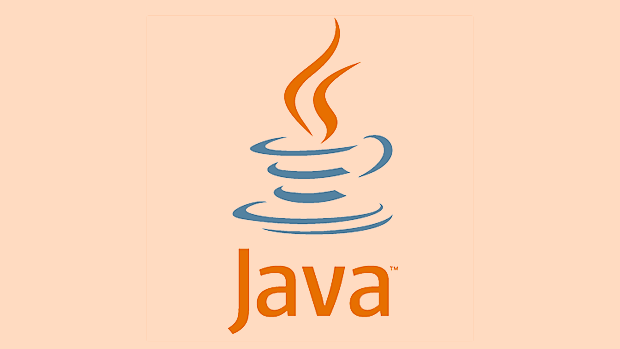Lock is used to protect shared resources and ensure thread safety; Latch is used to coordinate thread execution order and wait for events to complete. 1. Lock, such as ReentrantLock, controls resource access through lock() and unlock(), supports attempts to add locks, timeouts, etc., which is suitable for scenarios where high concurrency requires fine control; 2. Latch, such as CountDownLatch, implements thread waiting through countDown() and await(), which is suitable for scenarios where multiple thread tasks are started and waited for them to complete before continuing to execute; 3. When using Lock, you need to manually release the lock to avoid deadlocks, and when using Latch, you need to ensure that the counter is zeroed to prevent blockage. The two are designed for different purposes and are often used in combination to meet complex concurrency needs.

In Java concurrent programming, lock and latch are two very critical tools that coordinate execution order and resource access between multiple threads. Although they are all used to control thread behavior, there are obvious differences in uses and mechanisms. Simply put:

- Lock : It is mainly used to protect shared resources and prevent multiple threads from accessing simultaneously, causing data inconsistency.
- Latch : More like a signal mechanism, used to wait for an event to complete, such as asking a thread to wait for several other threads to complete before continuing to execute.
Let’s take a look at the common types, application scenarios and some precautions of these two from the perspective of actual use.
Basic usage and choice of Lock
In Java, java.util.concurrent.locks.Lock is an interface, and the most commonly used implementation class is ReentrantLock . It is more flexible than the built-in synchronized , and supports advanced features such as trying to acquire locks, timeouts, and interrupts.

Common ways to use:
- Use
lock()andunlock()to explicitly lock and release - Recommended to use with
try-finallyto ensure that the lock can be released - You can try to obtain locks through
tryLock()to avoid deadlocks
Lock lock = new ReentrantLock();
lock.lock();
try {
// Access shared resources} finally {
lock.unlock();
}Applicable scenarios:
- Multi-threading frequently modify shared variables
- Need to try to add locks or set timeout
- Scenarios with certain performance requirements in high concurrency environments
Notes:
- The lock must be released manually, otherwise it will easily lead to deadlock.
- Do not use multiple locks in nesting, otherwise it may cause deadlock problems
- Prioritize whether you really need a stronger feature than
synchronized
Typical usage scenarios for CountDownLatch
CountDownLatch is a synchronous auxiliary class that allows one or more threads to wait for other threads to complete operations. Its core mechanism is a counter, and when the counter is reduced to 0, the waiting thread will be awakened.
Common ways to use:
- Set the counter size during initialization
- Call
countDown()in task thread - Wait for the thread to call
await()until the counter reaches zero
CountDownLatch latch = new CountDownLatch(3);
for (int i = 0; i < 3; i ) {
new Thread(() -> {
// Execute the task latch.countDown();
}).start();
}
latch.await(); // The main thread waits for all child threads to completeApplicable scenarios:
- Start multiple threads and wait until all of them are completed before continuing to execute
- The initialization phase depends on multiple services to complete loading before continuing to start the main process.
- Unified trigger points when testing concurrent behavior
Notes:
- Once the counter is zeroed, it cannot be reset. If you need to reuse, you can consider
CyclicBarrier - Don't forget to call
countDown(), otherwise it will keep blocking - Suitable for one-time events, not suitable for recycled use scenarios
Summary of the difference between Lock and Latch
Although they can all affect the behavior of threads, their design purposes are different:

- Lock controls "access" to protect resources and ensure thread safety.
- Latch controls "time" to coordinate the execution order between threads.
To give an example to understand:
- You have a shared bank account and multiple people withdraw money at the same time → Use Lock to ensure the balance is correct
- You have a game where the referee has to wait for all athletes to be ready before starting the order → Use Latch to wait for all threads to complete the preparation action
These two tools are often used together. For example, during the concurrency initialization stage, you can use Latch to wait for all preconditions to meet before using Lock to protect subsequent operations.
Basically that's it. Mastering the usage scenarios of Lock and Latch can make you more comfortable when dealing with concurrent problems.
The above is the detailed content of Understanding Java Concurrency Locks and Latches. For more information, please follow other related articles on the PHP Chinese website!

Hot AI Tools

Undress AI Tool
Undress images for free

Undresser.AI Undress
AI-powered app for creating realistic nude photos

AI Clothes Remover
Online AI tool for removing clothes from photos.

Clothoff.io
AI clothes remover

Video Face Swap
Swap faces in any video effortlessly with our completely free AI face swap tool!

Hot Article

Hot Tools

Notepad++7.3.1
Easy-to-use and free code editor

SublimeText3 Chinese version
Chinese version, very easy to use

Zend Studio 13.0.1
Powerful PHP integrated development environment

Dreamweaver CS6
Visual web development tools

SublimeText3 Mac version
God-level code editing software (SublimeText3)

Hot Topics
 What is the `enum` type in Java?
Jul 02, 2025 am 01:31 AM
What is the `enum` type in Java?
Jul 02, 2025 am 01:31 AM
Enums in Java are special classes that represent fixed number of constant values. 1. Use the enum keyword definition; 2. Each enum value is a public static final instance of the enum type; 3. It can include fields, constructors and methods to add behavior to each constant; 4. It can be used in switch statements, supports direct comparison, and provides built-in methods such as name(), ordinal(), values() and valueOf(); 5. Enumeration can improve the type safety, readability and flexibility of the code, and is suitable for limited collection scenarios such as status codes, colors or week.
 What is the interface segregation principle?
Jul 02, 2025 am 01:24 AM
What is the interface segregation principle?
Jul 02, 2025 am 01:24 AM
Interface Isolation Principle (ISP) requires that clients not rely on unused interfaces. The core is to replace large and complete interfaces with multiple small and refined interfaces. Violations of this principle include: an unimplemented exception was thrown when the class implements an interface, a large number of invalid methods are implemented, and irrelevant functions are forcibly classified into the same interface. Application methods include: dividing interfaces according to common methods, using split interfaces according to clients, and using combinations instead of multi-interface implementations if necessary. For example, split the Machine interfaces containing printing, scanning, and fax methods into Printer, Scanner, and FaxMachine. Rules can be relaxed appropriately when using all methods on small projects or all clients.
 Asynchronous Programming Techniques in Modern Java
Jul 07, 2025 am 02:24 AM
Asynchronous Programming Techniques in Modern Java
Jul 07, 2025 am 02:24 AM
Java supports asynchronous programming including the use of CompletableFuture, responsive streams (such as ProjectReactor), and virtual threads in Java19. 1.CompletableFuture improves code readability and maintenance through chain calls, and supports task orchestration and exception handling; 2. ProjectReactor provides Mono and Flux types to implement responsive programming, with backpressure mechanism and rich operators; 3. Virtual threads reduce concurrency costs, are suitable for I/O-intensive tasks, and are lighter and easier to expand than traditional platform threads. Each method has applicable scenarios, and appropriate tools should be selected according to your needs and mixed models should be avoided to maintain simplicity
 Differences Between Callable and Runnable in Java
Jul 04, 2025 am 02:50 AM
Differences Between Callable and Runnable in Java
Jul 04, 2025 am 02:50 AM
There are three main differences between Callable and Runnable in Java. First, the callable method can return the result, suitable for tasks that need to return values, such as Callable; while the run() method of Runnable has no return value, suitable for tasks that do not need to return, such as logging. Second, Callable allows to throw checked exceptions to facilitate error transmission; while Runnable must handle exceptions internally. Third, Runnable can be directly passed to Thread or ExecutorService, while Callable can only be submitted to ExecutorService and returns the Future object to
 Understanding Java NIO and Its Advantages
Jul 08, 2025 am 02:55 AM
Understanding Java NIO and Its Advantages
Jul 08, 2025 am 02:55 AM
JavaNIO is a new IOAPI introduced by Java 1.4. 1) is aimed at buffers and channels, 2) contains Buffer, Channel and Selector core components, 3) supports non-blocking mode, and 4) handles concurrent connections more efficiently than traditional IO. Its advantages are reflected in: 1) Non-blocking IO reduces thread overhead, 2) Buffer improves data transmission efficiency, 3) Selector realizes multiplexing, and 4) Memory mapping speeds up file reading and writing. Note when using: 1) The flip/clear operation of the Buffer is easy to be confused, 2) Incomplete data needs to be processed manually without blocking, 3) Selector registration must be canceled in time, 4) NIO is not suitable for all scenarios.
 Best Practices for Using Enums in Java
Jul 07, 2025 am 02:35 AM
Best Practices for Using Enums in Java
Jul 07, 2025 am 02:35 AM
In Java, enums are suitable for representing fixed constant sets. Best practices include: 1. Use enum to represent fixed state or options to improve type safety and readability; 2. Add properties and methods to enums to enhance flexibility, such as defining fields, constructors, helper methods, etc.; 3. Use EnumMap and EnumSet to improve performance and type safety because they are more efficient based on arrays; 4. Avoid abuse of enums, such as dynamic values, frequent changes or complex logic scenarios, which should be replaced by other methods. Correct use of enum can improve code quality and reduce errors, but you need to pay attention to its applicable boundaries.
 Exploring Different Synchronization Mechanisms in Java
Jul 04, 2025 am 02:53 AM
Exploring Different Synchronization Mechanisms in Java
Jul 04, 2025 am 02:53 AM
Javaprovidesmultiplesynchronizationtoolsforthreadsafety.1.synchronizedblocksensuremutualexclusionbylockingmethodsorspecificcodesections.2.ReentrantLockoffersadvancedcontrol,includingtryLockandfairnesspolicies.3.Conditionvariablesallowthreadstowaitfor
 How Java ClassLoaders Work Internally
Jul 06, 2025 am 02:53 AM
How Java ClassLoaders Work Internally
Jul 06, 2025 am 02:53 AM
Java's class loading mechanism is implemented through ClassLoader, and its core workflow is divided into three stages: loading, linking and initialization. During the loading phase, ClassLoader dynamically reads the bytecode of the class and creates Class objects; links include verifying the correctness of the class, allocating memory to static variables, and parsing symbol references; initialization performs static code blocks and static variable assignments. Class loading adopts the parent delegation model, and prioritizes the parent class loader to find classes, and try Bootstrap, Extension, and ApplicationClassLoader in turn to ensure that the core class library is safe and avoids duplicate loading. Developers can customize ClassLoader, such as URLClassL






